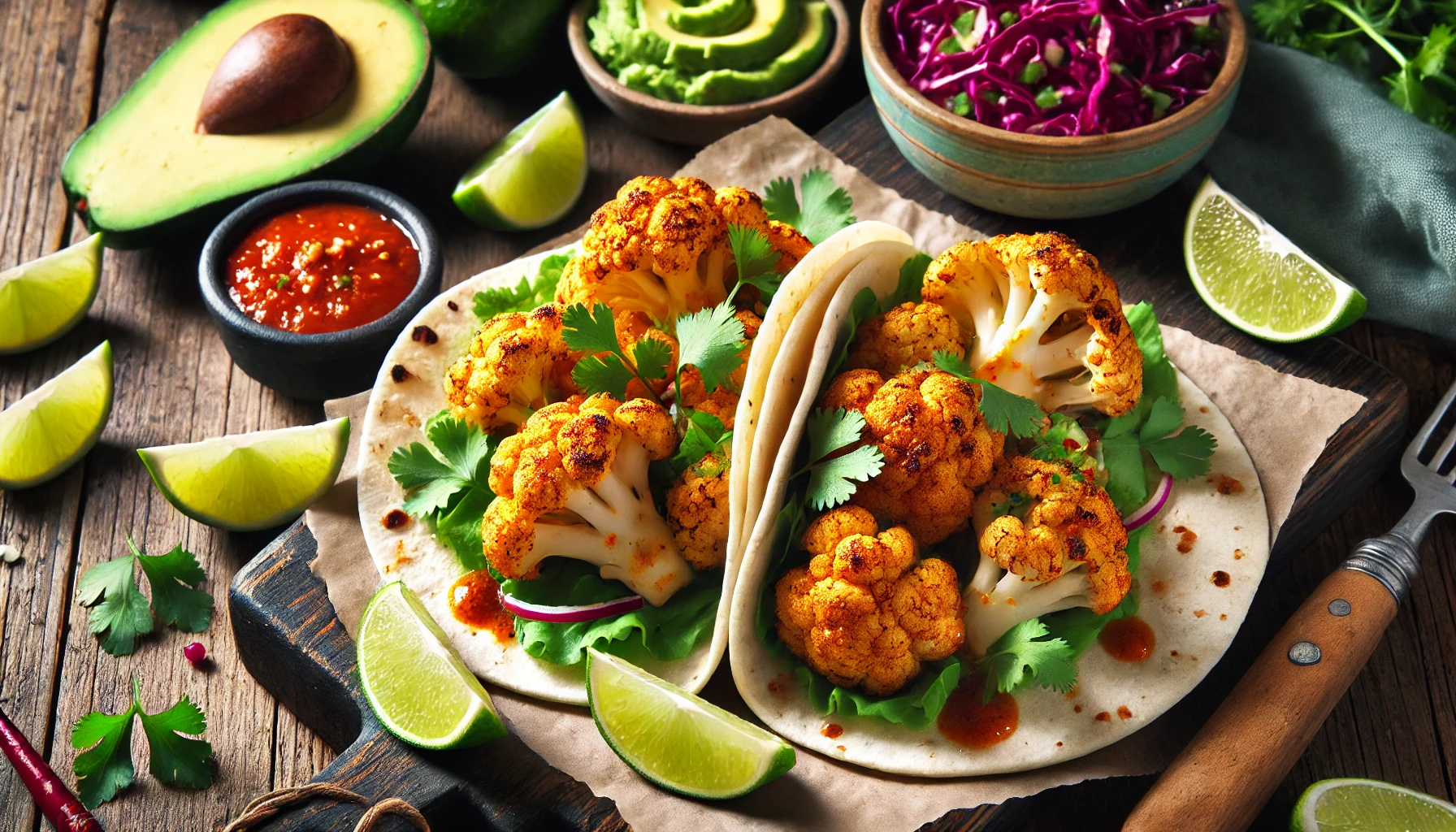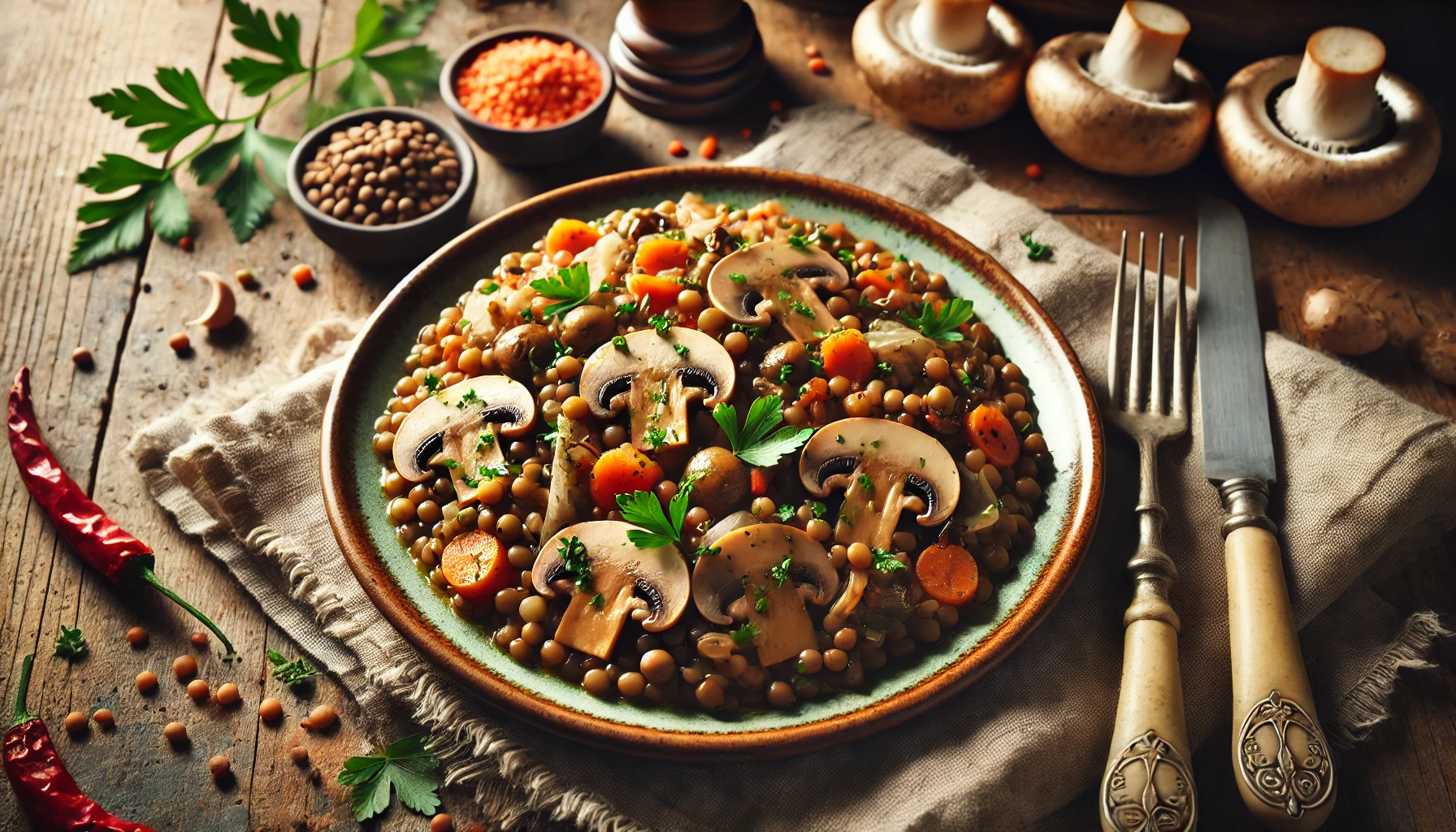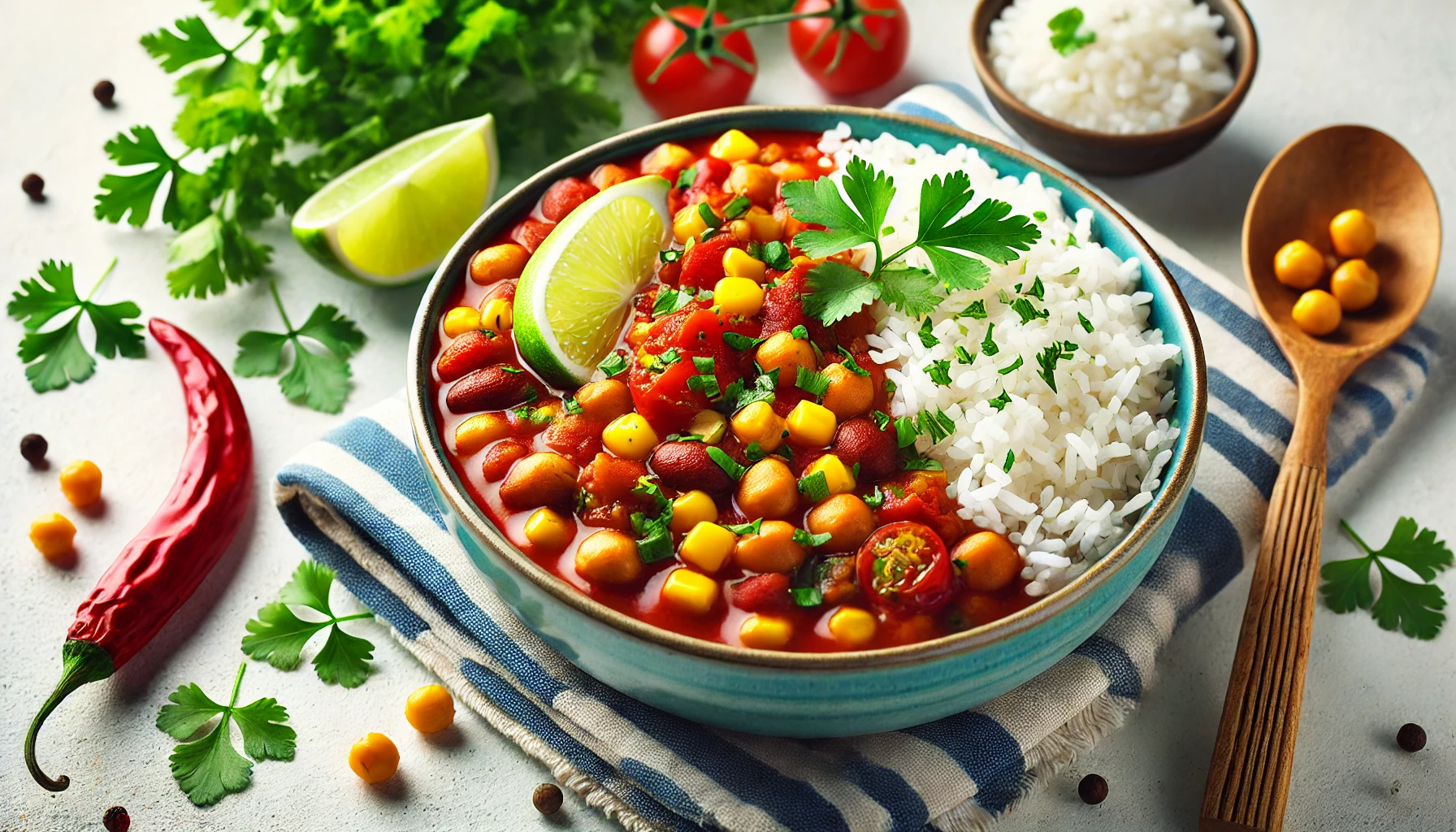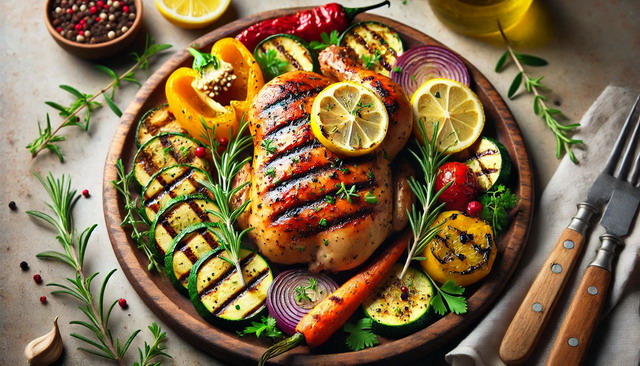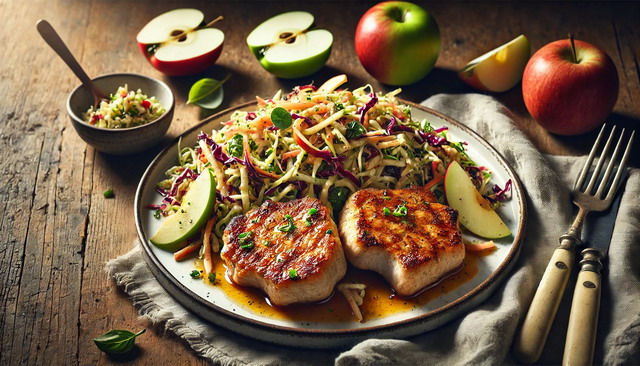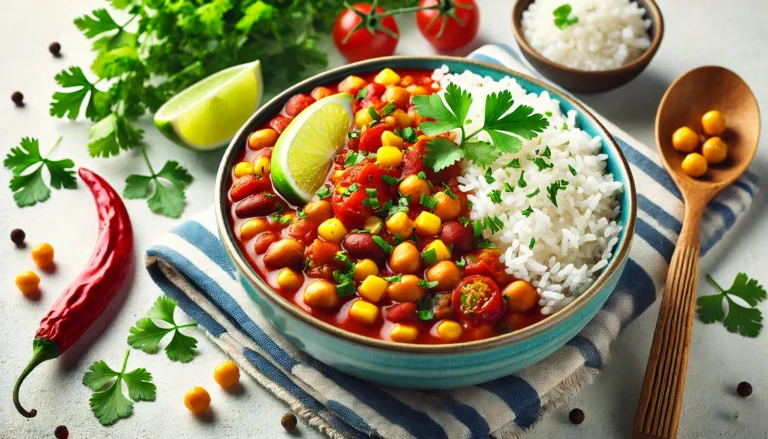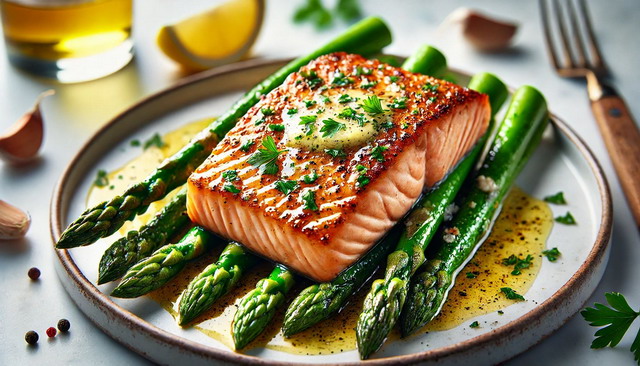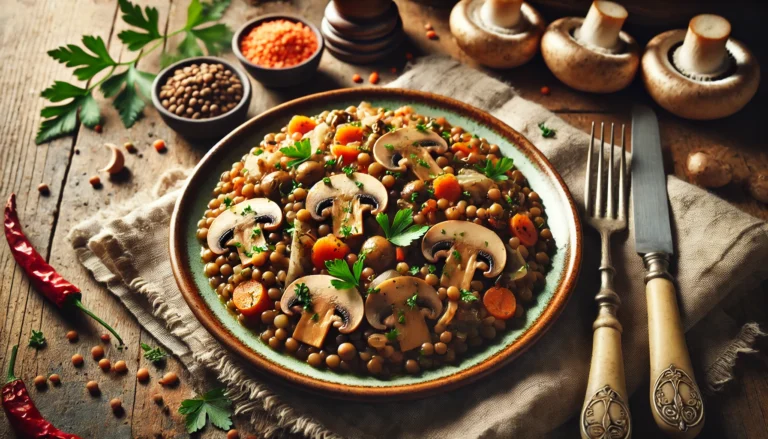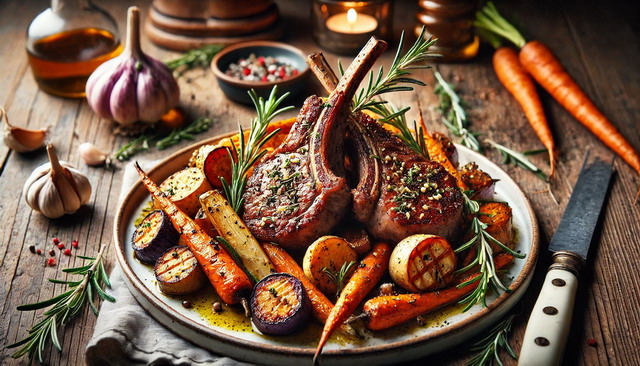When it comes to creating a dinner that’s both satisfying and sophisticated, balsamic glazed steak paired with sweet potato fries is a winning combination. This meal blends rich, savory flavors with the natural sweetness of sweet potatoes, resulting in a dish that’s as delightful to the palate as it is nutritious. In this post, we’ll explore how to make the perfect balsamic glazed steak, why sweet potato fries are a healthier alternative to regular fries, and how to pair these two components to create a balanced and elegant meal.
How to Make Balsamic Glazed Steak
Step-by-Step Guide to Preparing the Perfect Balsamic Glaze
The key to an unforgettable balsamic glazed steak lies in the glaze itself. Balsamic vinegar, known for its deep, tangy flavor, serves as the foundation. To start, you’ll need a high-quality balsamic vinegar. The best balsamic vinegars are aged, allowing their flavors to develop complexity over time. For a simple yet effective glaze, combine balsamic vinegar with a touch of brown sugar or honey. This addition balances the acidity of the vinegar with a subtle sweetness, creating a harmonious flavor profile.
Begin by heating the balsamic vinegar and sweetener in a small saucepan over medium heat. Stir the mixture continuously to prevent it from sticking or burning. As the vinegar heats, it will start to reduce, thickening into a syrupy consistency. This reduction is crucial; it concentrates the flavors, ensuring that every drop of the glaze packs a punch. Once the glaze reaches the desired thickness, remove it from the heat and let it cool slightly. This allows the flavors to meld together and ensures the glaze is easy to work with when you apply it to the steak.
Tips for Cooking Steak with Balsamic Glaze
Cooking the steak to perfection is just as important as getting the glaze right. The type of steak you choose can greatly impact the final dish. Cuts like ribeye, sirloin, or filet mignon work wonderfully with balsamic glaze, as they have enough marbling to remain tender and flavorful during cooking.
Start by seasoning your steak with salt and pepper. For best results, allow the steak to come to room temperature before cooking; this helps it cook more evenly. Heat a cast-iron skillet or grill pan over high heat until it’s smoking hot. Sear the steak on each side for about 3-4 minutes, depending on your preferred doneness. For a medium-rare steak, aim for an internal temperature of 130°F (54°C).
Once the steak is seared, reduce the heat slightly and brush the balsamic glaze generously over both sides. Continue to cook for another 1-2 minutes per side, allowing the glaze to caramelize without burning. The result is a steak that’s rich in flavor, with a beautifully charred crust and a juicy, tender interior.
Sweet Potato Fries as a Healthy Side Dish
Why Sweet Potato Fries are a Healthier Alternative to Regular Fries
Sweet potato fries aren’t just a trendy alternative to traditional fries—they’re a genuinely healthier option. Sweet potatoes are packed with vitamins, minerals, and antioxidants that regular potatoes simply can’t match. One of the most notable differences is in the vitamin content: sweet potatoes are high in vitamin A, which is essential for eye health, immune function, and skin health.
In addition to their vitamin content, sweet potatoes have a lower glycemic index than white potatoes. This means they cause a slower, more gradual rise in blood sugar levels, which is beneficial for maintaining steady energy levels and preventing sugar crashes. They’re also rich in dietary fiber, which aids digestion and promotes a feeling of fullness, making them a great choice for those looking to maintain or lose weight.
How to Make Crispy Sweet Potato Fries in the Oven
Making crispy sweet potato fries at home is easier than you might think. Start by preheating your oven to 425°F (220°C). While the oven heats, peel and slice the sweet potatoes into thin, even strips. The key to crispy fries is uniformity—if your fries are all the same size, they’ll cook evenly and get that coveted crispy exterior.
Next, toss the sweet potato fries in a bowl with a tablespoon of olive oil, ensuring each fry is lightly coated. You can also add seasoning at this stage; a simple mix of salt, pepper, and paprika works well, but feel free to experiment with flavors like garlic powder or cinnamon for a unique twist.
Spread the fries out on a baking sheet in a single layer. This is crucial—if the fries are piled on top of each other, they’ll steam rather than crisp up. Bake the fries for 20-25 minutes, flipping them halfway through to ensure even cooking. When they’re golden brown and crispy, remove them from the oven and sprinkle with a bit more salt if desired.
Pairing Balsamic Glazed Steak with Sweet Potato Fries
Best Wine Pairings with Balsamic Glazed Steak
Pairing the right wine with your meal can elevate the dining experience, bringing out the best flavors in both the steak and the sweet potato fries. Balsamic glazed steak, with its rich and slightly sweet glaze, pairs beautifully with a full-bodied red wine. Wines like Cabernet Sauvignon, Syrah, or Zinfandel are excellent choices. These wines have bold flavors and enough tannins to cut through the richness of the steak while complementing the sweetness of the balsamic glaze.
For those who prefer white wine, a rich Chardonnay with a hint of oak can work surprisingly well. The buttery texture of the wine complements the caramelized notes of the balsamic glaze, creating a harmonious pairing.
Creating a Balanced Meal with Steak and Sweet Potato Fries
This meal is not only delicious but also balanced in terms of nutrition. The steak provides a high-quality source of protein, essential for muscle repair and growth. The balsamic glaze, while adding flavor, is relatively low in calories, especially when compared to heavier sauces like béarnaise or cream-based reductions.
On the other hand, sweet potato fries contribute complex carbohydrates and fiber, ensuring you get a steady release of energy without the spikes and crashes associated with simpler carbs. The vitamins and antioxidants in sweet potatoes also add a nutritional boost, making this meal a wholesome choice for any dinner table.
Together, balsamic glazed steak and sweet potato fries offer a balanced combination of protein, carbs, and healthy fats, along with a delightful mix of flavors and textures. Whether you’re cooking for a special occasion or simply treating yourself to a great meal, this dish is sure to impress.
Common Mistakes to Avoid When Making Balsamic Glazed Steak
How to Prevent Balsamic Glaze from Burning
One of the most common pitfalls when making balsamic glazed steak is accidentally burning the glaze. Balsamic vinegar, especially when combined with sugar or honey, can caramelize quickly, which is both a blessing and a curse. When done correctly, it creates a deliciously sticky coating for your steak. However, if the heat is too high or the glaze is left unattended, it can easily scorch, resulting in a bitter, unpleasant flavor.
To avoid this, it’s essential to keep a close eye on the glaze as it cooks. After applying the glaze to the steak, reduce the heat to medium or even medium-low, depending on your stove’s strength. This slower cooking process allows the glaze to thicken and adhere to the steak without burning. Additionally, it’s a good idea to move the steak around in the pan or on the grill, ensuring the glaze is evenly distributed and not sitting in one spot for too long.
Another tip is to prepare the balsamic glaze in advance and let it cool slightly before applying it to the steak. This pre-reduction of the vinegar minimizes the time the glaze spends on the heat after it’s applied, reducing the risk of burning.
The Best Cuts of Steak for Balsamic Glaze
The choice of steak cut can make a significant difference in how well the balsamic glaze complements the meat. While the glaze can enhance almost any cut, some steaks are particularly well-suited to this rich, tangy topping.
Ribeye is a top choice for balsamic glazed steak. Its high marbling ensures that the meat stays tender and juicy, while the rich flavor of the ribeye stands up well to the boldness of the balsamic glaze. Sirloin is another excellent option, offering a leaner cut without sacrificing flavor. Its firmer texture can provide a nice contrast to the sweet and tangy glaze.
For those looking for a more luxurious option, filet mignon is a perfect match. The tender, buttery texture of the filet mignon pairs beautifully with the sticky glaze, creating a melt-in-your-mouth experience. However, because filet mignon is leaner, be sure not to overcook it, as it can dry out more easily.
No matter which cut you choose, it’s important to let the steak rest after cooking. This resting period allows the juices to redistribute throughout the meat, ensuring that each bite is as flavorful as possible.
Variations on Balsamic Glazed Steak and Sweet Potato Fries
Creative Twists on Balsamic Glazed Steak
While the classic balsamic glazed steak is a dish of pure comfort and sophistication, there’s plenty of room for creativity. By adding a few extra ingredients to the glaze, you can take this dish in exciting new directions.
For a spicy kick, consider incorporating some crushed red pepper flakes or a dash of Sriracha into the balsamic glaze. The heat pairs surprisingly well with the tanginess of the balsamic vinegar, creating a glaze that’s both sweet and spicy.
If you’re a fan of garlic, a garlic-infused balsamic glaze might be just what you’re looking for. Simply sauté minced garlic in olive oil before adding the balsamic vinegar to the pan. This step infuses the glaze with a deep, savory flavor that enhances the steak’s richness.
For a more herbaceous twist, try adding fresh rosemary or thyme to the glaze. These herbs bring a fragrant, earthy note to the dish, balancing the sweetness of the glaze with their slightly bitter undertones. You can either add the herbs directly to the glaze or use them to marinate the steak before cooking.
Alternative Sides to Serve with Balsamic Glazed Steak
While sweet potato fries are a fantastic accompaniment to balsamic glazed steak, there are plenty of other sides that pair just as well. If you’re looking to switch things up or cater to different tastes, here are a few alternative side dishes to consider.
One classic option is a simple garlic mashed potato. The creamy texture of mashed potatoes complements the richness of the steak, while the garlic adds a savory depth that ties the dish together. For a lighter alternative, consider serving the steak with a fresh arugula salad. The peppery bite of arugula contrasts nicely with the sweet glaze, and a light vinaigrette made with lemon juice and olive oil can help cut through the richness of the steak.
Grilled asparagus is another excellent choice, offering a crunchy, slightly bitter contrast to the sweet and tangy steak. Drizzle the asparagus with a bit of olive oil and a squeeze of lemon juice before grilling to enhance its natural flavors.
For a more indulgent side, try serving the steak with a rich, cheesy polenta. The creamy polenta provides a comforting base that allows the flavors of the steak and glaze to shine, creating a truly decadent meal.
Conclusion: Why Balsamic Glazed Steak with Sweet Potato Fries Should Be Your Next Meal
In summary, balsamic glazed steak with sweet potato fries is a dish that combines flavor, nutrition, and culinary sophistication. The balsamic glaze adds a touch of elegance to the steak, while the sweet potato fries offer a healthy and delicious side that elevates the meal. Whether you stick to the classic recipe or experiment with new variations, this dish is sure to impress at any dinner table.
From avoiding common mistakes to exploring creative twists, there’s no shortage of ways to make this meal your own. So why not give it a try? With its perfect balance of savory and sweet, crispy and tender, balsamic glazed steak with sweet potato fries is more than just a dinner—it’s an experience worth savoring.
FAQs about Balsamic Glazed Steak with Sweet Potato Fries
- What type of balsamic vinegar should I use for the glaze?
For the best results, use high-quality, aged balsamic vinegar. Aged balsamic vinegar has a richer, more complex flavor that reduces well into a thick, syrupy glaze. Avoid cheaper, unaged vinegars, as they may be too acidic and lack the depth of flavor needed for a perfect glaze.
- Can I use a different sweetener in the balsamic glaze?
Yes, you can substitute brown sugar or honey with other sweeteners like maple syrup or agave nectar. Each sweetener will add its own unique flavor to the glaze, so feel free to experiment with different options to find the one that suits your taste best.
- How do I prevent the balsamic glaze from burning?
To prevent the balsamic glaze from burning, reduce the heat to medium or medium-low after applying it to the steak. Stir the glaze continuously while it cooks, and keep a close eye on it to avoid scorching. It’s also a good idea to pre-reduce the glaze before applying it to the steak.
- What are the best cuts of steak for balsamic glaze?
Ribeye, sirloin, and filet mignon are excellent choices for balsamic glazed steak. Ribeye offers rich marbling and flavor, sirloin provides a leaner yet flavorful option, and filet mignon delivers a tender, luxurious experience. Each cut pairs well with the tangy sweetness of balsamic glaze.
- How can I make my sweet potato fries crispy?
To achieve crispy sweet potato fries, cut them into uniform slices, coat them lightly with olive oil, and spread them out in a single layer on a baking sheet. Bake at 425°F (220°C) for 20-25 minutes, flipping halfway through. This method helps the fries cook evenly and develop a crispy exterior.
- Can I add other ingredients to the balsamic glaze?
Absolutely! You can enhance the flavor of your balsamic glaze by adding ingredients like garlic, fresh herbs (such as rosemary or thyme), or a dash of spice like red pepper flakes. These additions can create a unique and personalized glaze that complements the steak beautifully.
- What are some alternative sides to sweet potato fries?
While sweet potato fries are a popular choice, you can also serve balsamic glazed steak with sides like garlic mashed potatoes, grilled asparagus, a fresh arugula salad, or creamy polenta. Each of these sides offers a different flavor and texture that pairs well with the steak.
- What wine pairs best with balsamic glazed steak?
Balsamic glazed steak pairs well with full-bodied red wines like Cabernet Sauvignon, Syrah, or Zinfandel. These wines have bold flavors that complement the richness of the steak and the sweetness of the balsamic glaze. For white wine lovers, a rich, oaky Chardonnay can also be a great choice.
- How should I store leftovers?
Store any leftover balsamic glazed steak and sweet potato fries in an airtight container in the refrigerator. The steak should keep for up to three days, while the sweet potato fries are best consumed within two days. Reheat the steak gently in a pan to avoid overcooking, and crisp up the fries in the oven for the best texture.
- Can I make the balsamic glaze ahead of time?
Yes, you can prepare the balsamic glaze ahead of time. Simply cook the glaze as directed, allow it to cool, and store it in an airtight container in the refrigerator. When ready to use, gently reheat the glaze before applying it to the steak. This makes the cooking process quicker and more convenient.

